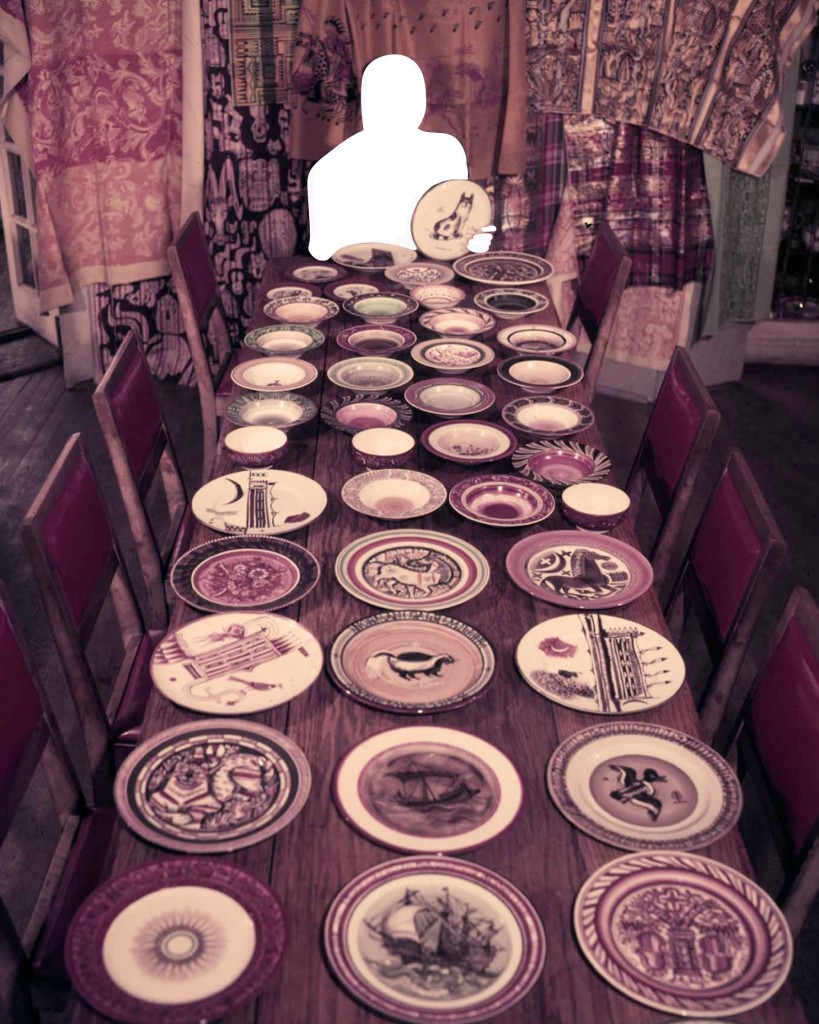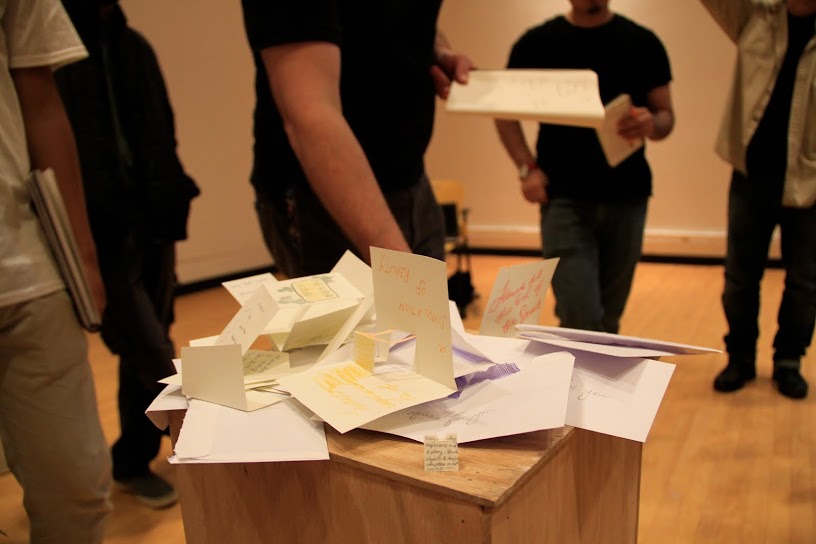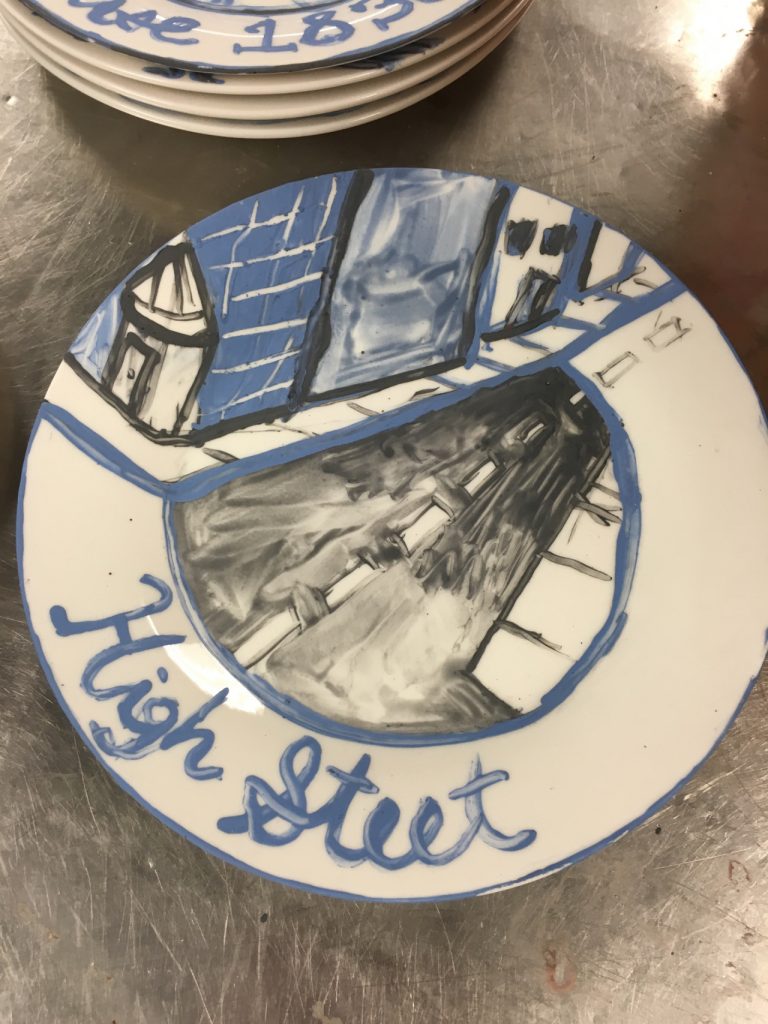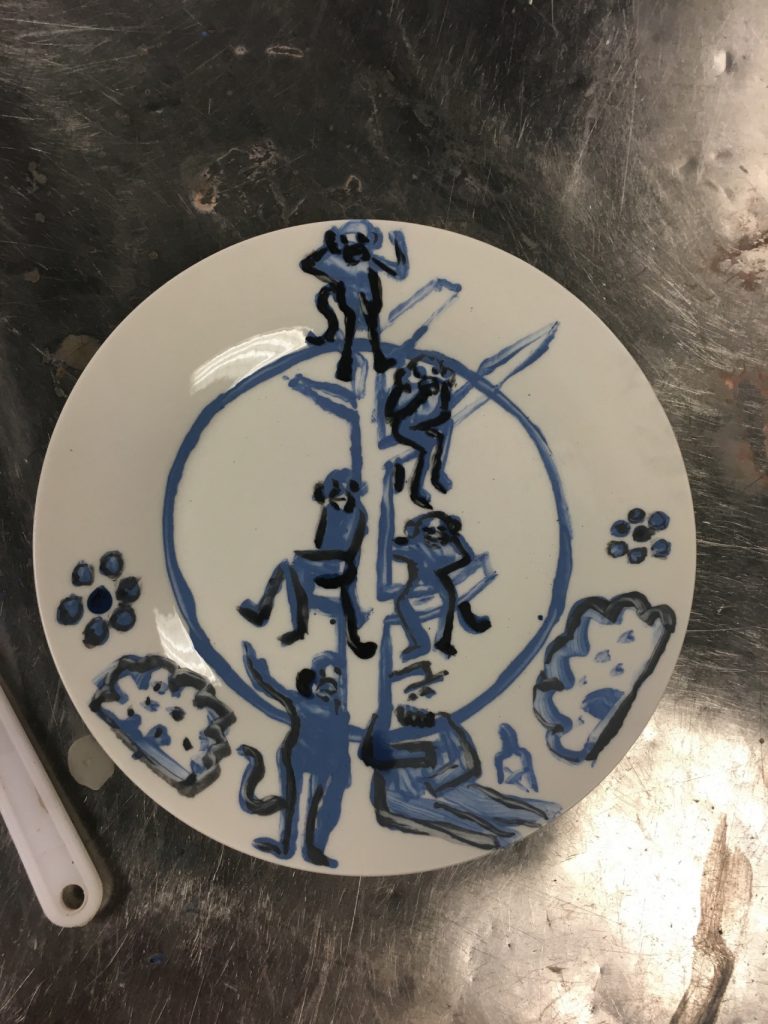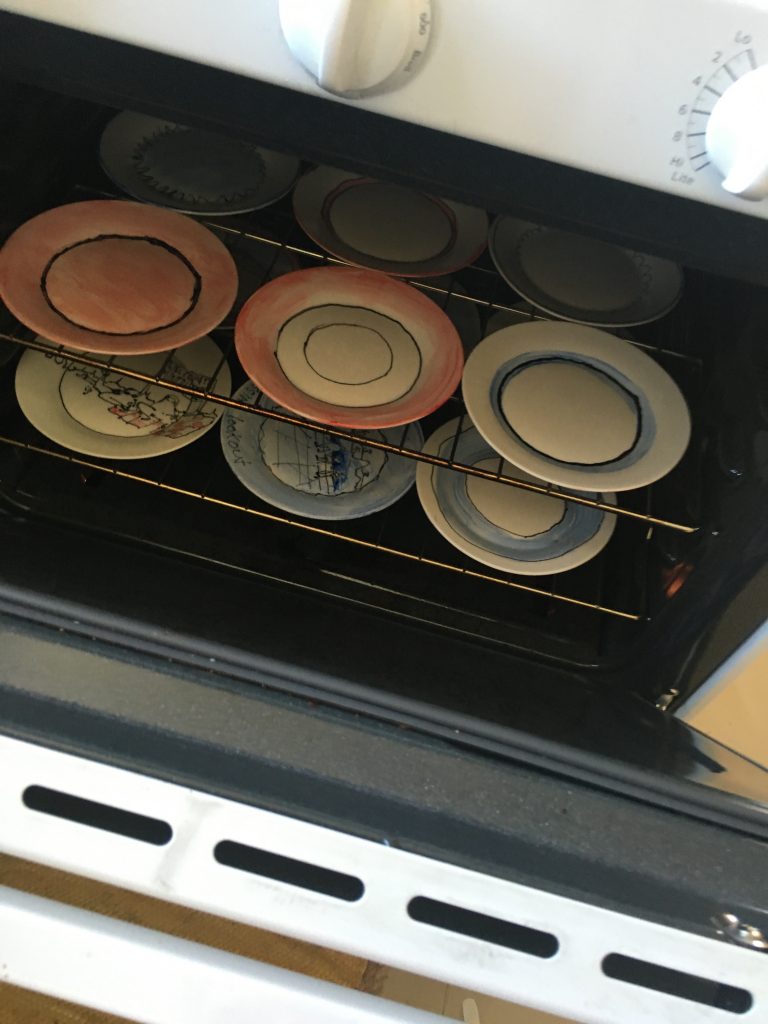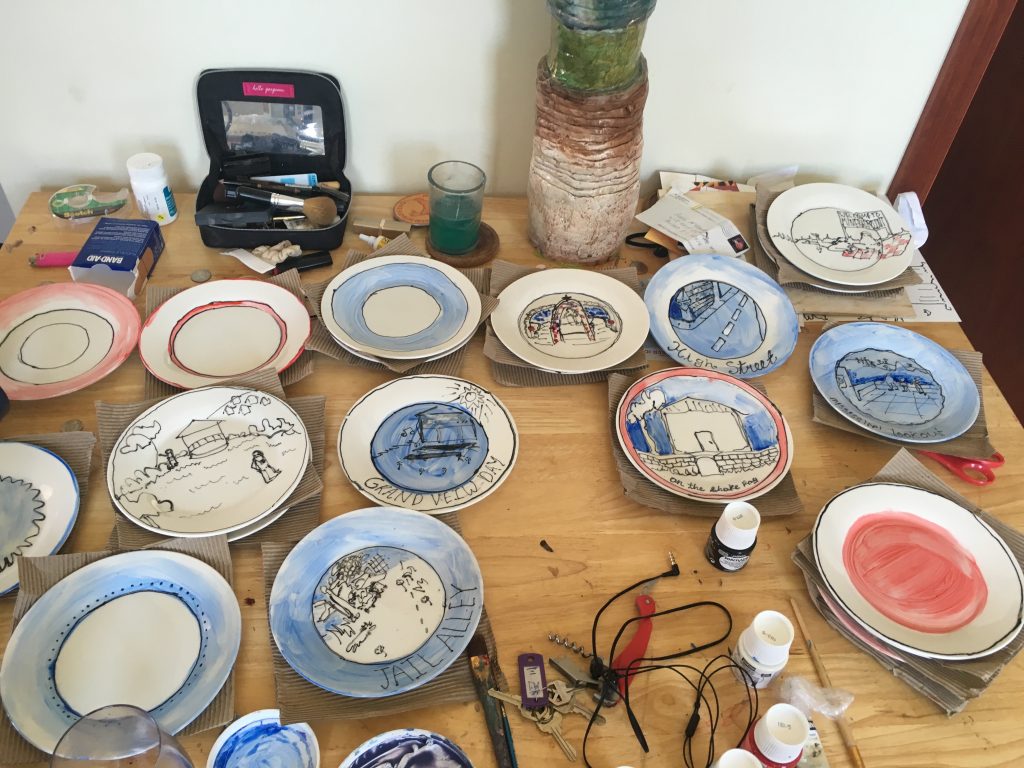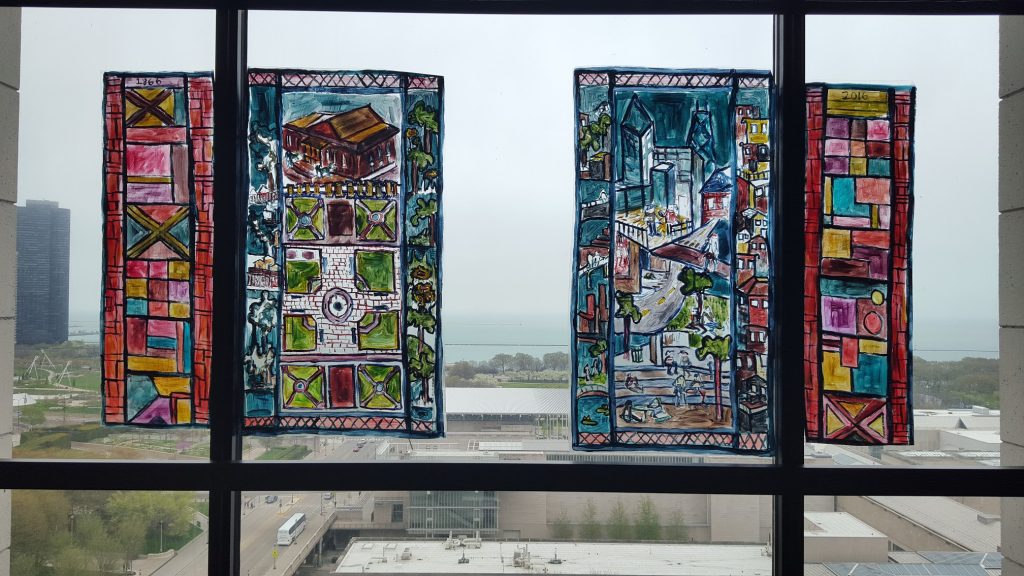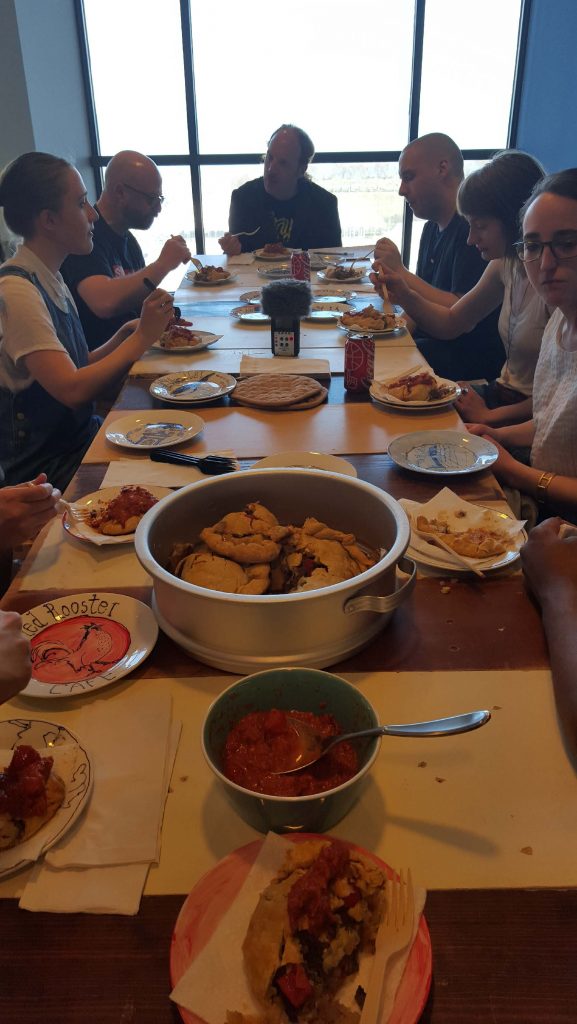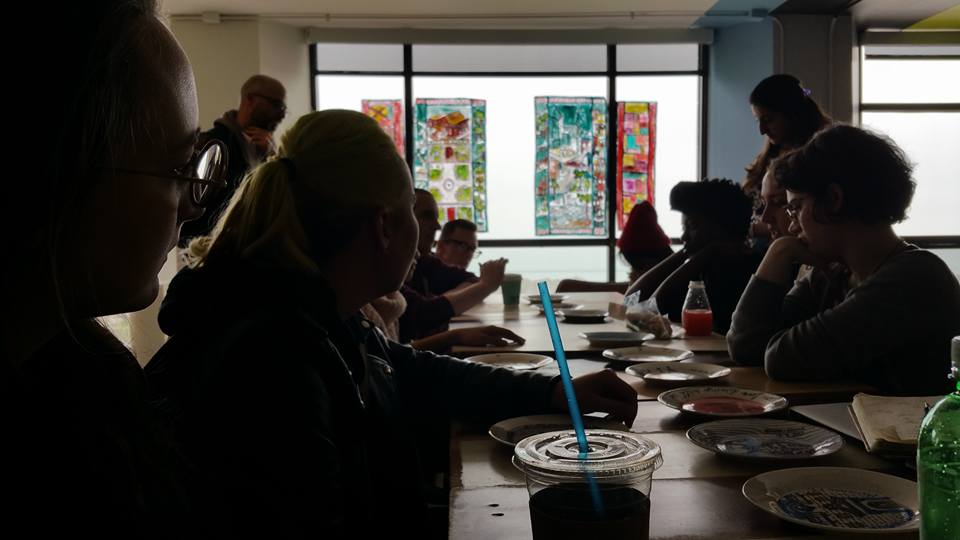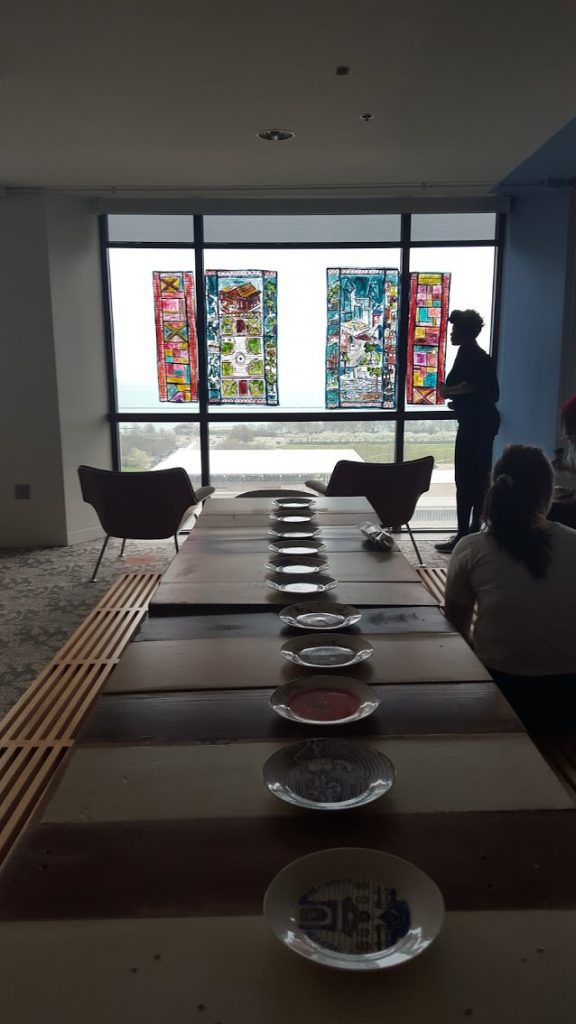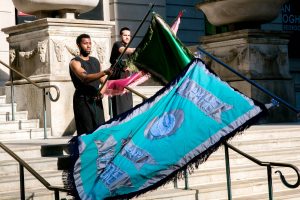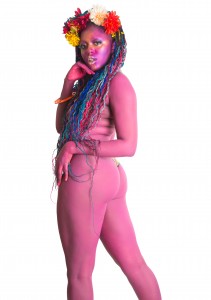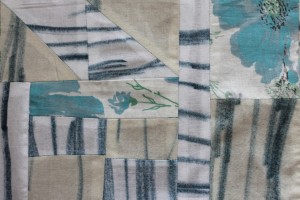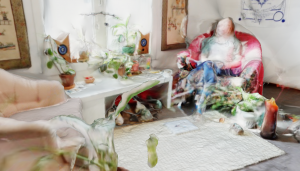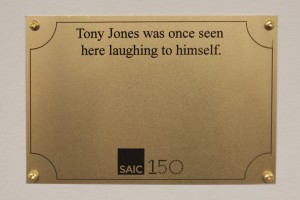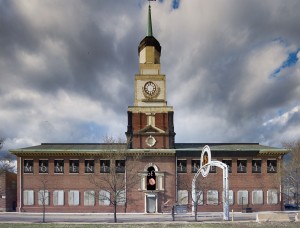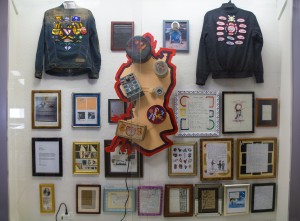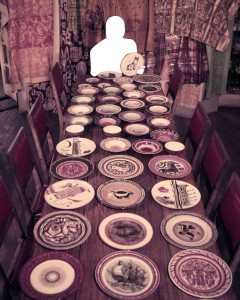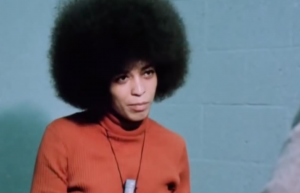With a focus on modern and contemporary Asian art, Haley Jung (BAVCS 2017) is actively engaged in formalizing her studies through facilitating exhibitions, guided tours, and symposia on and off campus. Her artistic research explores cross-cultural themes, examining the attitudinal shifts art objects produce when encountered by diverse audiences.
Grace McKendry (BFA 2016) is a Chicago-based interdisciplinary artist, raised in California and New Zealand. Her practice focuses on examining and representing places and environments she inhabits through a combination of painting, drawing, ceramics, and sculpture.
Edgar x Edgar is a collaborative performance between Haley Jung and Grace McKendry. The performance on Saturday April 16th will be a staged dinner party, in honor of SAIC alumni and collaborators, Edgar Miller and Edgar Hellum. The performance seeks to embody the transformative act of ‘serving’ food and what it may mean to ‘be fed’ intellectually, in honor of the spirit of the SAIC community and the artistic generosity of the school. A select group of participants within and beyond SAIC, will be invited as dining guests to the re-enactment of Edgar & Edgar’s dinner party. The 14th floor lounge in Maclean will be activated to serve as the dining room where the participants will be served personalized meals, on customized hand painted plates. In honor of the 150th anniversary of SAIC, the artists will create 150 dining plates, which after the performance, will be on display ‘in situ’ at the dining table for the duration of the month.
Original event date: Saturday, April 16th 2016 at 4pm, 14th floor of the MacLean Center, 112 S. Michigan Ave.
Previously On View: 14th floor of the MacLean Center, 112 S. Michigan Ave. (at the same location)
Haley Jung’s reflection:
My projects in SAIC 150: Repeat Transmission have been a combination of artistic and curatorial practices. Through collaborating with Dong Chan Kim in the fall semester and with Grace McKendry in the spring semester, my core focus has been spatial re-interpretation and construction, as well as community building. At the center of this yearlong research has been the SAIC alumnus from the early 20th century, Edgar Miller (SAIC Normal School 1916).
In the fall semester, I performed A Space For You, a preliminary activity prior to our first proposal for Telegraphic Fields (First Transmission). I handed out an envelop to each person, which contained a small piece of folded paper. Some of the papers had a pop-up chair cut out, and some were left blank. Notably, performing the physical interaction with a group of people in an intimate setting through the very act of ‘giving’ reappears in my Spring project, Edgar x Edgar.
My attention during the Fall was not as directed towards the community building as it was in the Spring. I concentrated more on the spatial construction, in particular a creation of private space in the public. As a result, the final outcome of Telegraphic Fields (First Transmission) consisted of a rocking chair that was most likely from the 1930s, on a circular red carpet, with a magazine holder on the side containing three appropriated magazines, surrounded by stacks of publications found on campus. Titled Unidentified Resident, it was displayed on the first floor of the Neiman Center, a very public and open space, which imposed a greater challenge in creating a ‘private’ space. Unfortunately the red carpet functioned like a spotlight, flipping over my intention further. Ultimately it had failed to be activated by passing students who could have sat down on the chair and read the magazines. The only time it was activated was during Live Transmission through the performance that was a lecture-like monologue on the life of Edgar Miller.
This challenge pushed me to re-examine the concept of spatial construction in terms of curatorial practice. Upon realization that community gathering is crucial for spatial construction, I was immediately thinking about an anecdote on Edgar Miller. It was the story of Miller inviting people for a dinner at one of his handcrafted houses, serve them with plates he hand-painted, and sometimes play games in which the winner got to choose the plates to take home. Three keywords that developed from this thought were: food, conversation, and plates. Coincidentally, Grace’s project was on commemorative plates.
Through multiple conversations with Grace, it was fascinating to discover how both alumni we were researching, Edgar Miller and Edgar Hellum, had been engaged in the very act of serving food as a community spirit and artistic generosity. This later developed into Edgar x Edgar, a rotation installation as well as a community dinner party, in which a selected group of participants who are affiliated with SAIC were, invited as dining guests. The 14th floor MacLean lounge was activated to function as a dining room. A hand-constructed dining table that can easily fit five or more people on each side was placed towards the wall of windows. On the window were four rectangular strips of painted vinyl as facsimile of stained glasses, which were in response to Edgar Miller’s stained glass designs. On the table we displayed a row of hand painted plates. In honor of the 150th anniversary of SAIC, Grace and I each designed and produced 75 plates (which is still ongoing) to commemorate our yearlong journey as a class and an individual, and everyone we got to know on and off campus. The plates are displayed in rotation, and anyone is free to take the plates.
On Saturday, April 16th, we held the Edgar x Edgar community dinner party. It was two hours long performance in which the dining guests had to sign consent for audio recording and photographic documentation. They ate on the plates that exclusively reflected the trip to Mineral Points. To parallel with the narrative flowing through the plates, we served Cornish pasties, one of the most memorable dish we had during the trip. Grace was the cook of the day, and I was the assistant. The process was very personal and intimate, especially when we were trying to mimic how Edgar Hellum folded and wrapped the dough in the video documented by Lisa Stone.
The installation of Edgar x Edgar was definitely more successful than Untitled Resident especially in terms of spatial reconstruction and community gathering. It was exciting to see some students actually using the table, and Carlos’ email about some students’ confusion about the lounge looking like a “dining room” added onto the excitement. The vinyl for stained glass came off due to the heat, yet it added a nice touch on the notion of temporality of the performance that took place in April. The choice of 14th floor lounge in the MacLean building definitely helped to create a more intimate space in comparison to the first floor of the Neiman Center.
Grace McKendry’s reflection:
I worked extremely differently each semester, both with their ups and downs. In the fall, I worked from gathering information and then deciding what that information meant in terms of how I would interpret it into my installation. There were two main jumping off points – Crayon and Casque, a student publication published in 1918, and the 20th century decorative plates we saw in Mineral Point. This led me to the decision to make two screen print reproductions of 1918 propaganda, along with three plates commemorating SAIC soldiers.
Spring semester was more set in stone from the beginning – at the end of the fall, I decided that I would be making 150 plates. I wasn’t sure what that would look like until I was joined by my collaborator, and we came up with the basics setup and concept of our installation. We would be transforming the 14th floor lounge into a dinging room space, to honor the alumni that had caught our attention most – for me, that was Edgar Hellum, and for my collaborator, that was Edgar Miller – resulting in the title Edgar X Edgar.
Within my own painting practice, I’m not usually one to plan things in advanced in the way that was required, and so I had some difficulty wrapping my head around it in the beginning of the semester. The plates came first, so we started doing glaze tests, only to find the glazing wasn’t giving us the finish we were looking for.
Each plate holds an image in relation to the history of our class and what we’ve been looking at this year, as well as what’s been produced by everyone else in the class. We found an oven bake clay that worked better than the glaze for the colors we wanted, and since I could work on them at home, continuously making 150 plates became much easier to endeavor.
The plates were our main focus, but the installation require much more work than that – we needed to find a material to us as a fake “stained glass” to recreate that inside-the-home feeling, and we wanted to make our dining table, because the hand made quality of everything was important to us. Our first push back of the event date came with the plates and the table – because we sourced our wood from the Chicago Rebuilding Exchange and the wood had all been treated in some form, it wasn’t allowed in any of the school woodshops. We enlisted a friend for help and the table came together, followed by the plates. We solved the window problem by finding clear vinyl, and it went up after the event to due when it arrived in the mail.
Although the installation is a dining room at all times, it really came alive when we served the food. I made Cornish pasties, in the style of Pendarvis (with some variation) and served it to a small group of people. The space really came a live during this –the smell of the food and the ambient conversation really made for a comfortable environment. Since the event, I’ve seen people eating at our table, using it for homework, and have heard great feedback from students that have seen it and enjoyed that there was such a warm and home-like place to sit in a high-rise classroom building.
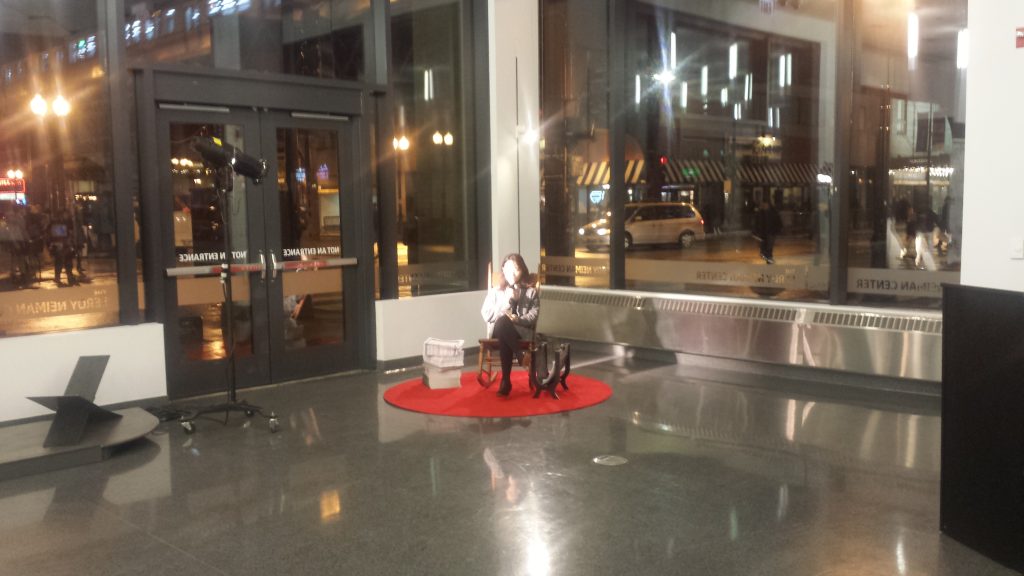 Haley Jung & Dong Chan Kim, Unidentified Resident, 2015, installation view at the LeRoy Neiman Center during Live Transmission.
Haley Jung & Dong Chan Kim, Unidentified Resident, 2015, installation view at the LeRoy Neiman Center during Live Transmission. Haley Jung & Dong Chan Kim, Untitled Residents 1916, 1934, and 2015 zines, 2015, Inkjet Prints, 11 x 17 inches, Proposed zine cover designs.
Haley Jung & Dong Chan Kim, Untitled Residents 1916, 1934, and 2015 zines, 2015, Inkjet Prints, 11 x 17 inches, Proposed zine cover designs.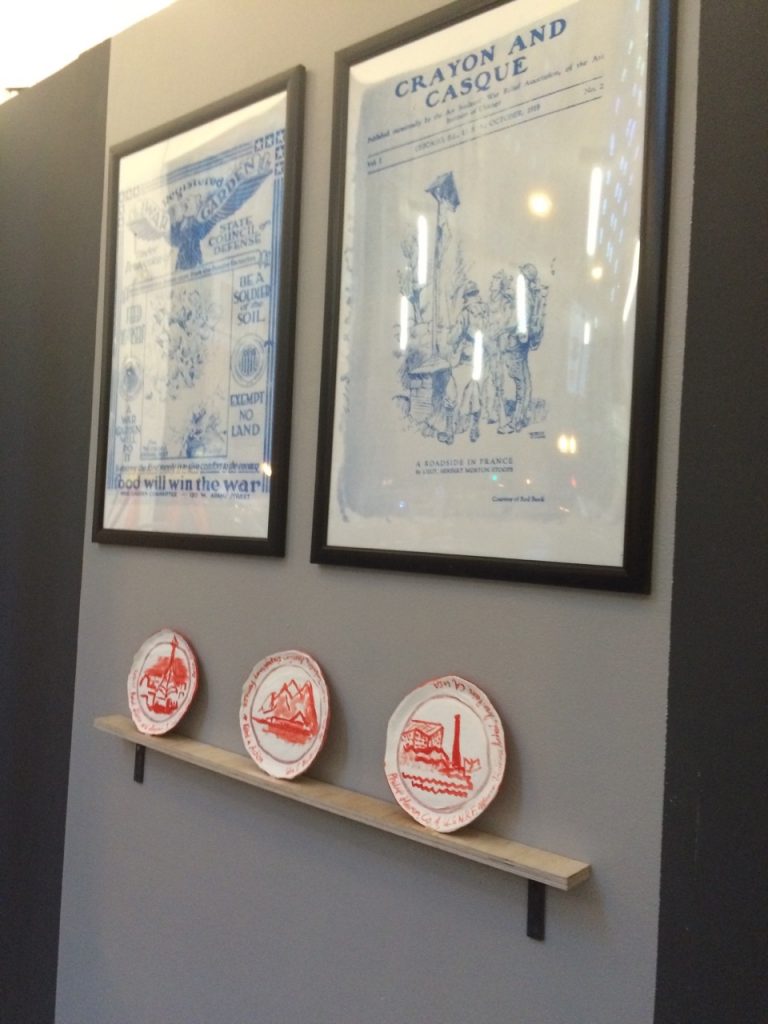 Grace McKendry, Crayon and Casque, 2015, Screenprint reproductions of 1918 propaganda, handmade plates.
Grace McKendry, Crayon and Casque, 2015, Screenprint reproductions of 1918 propaganda, handmade plates.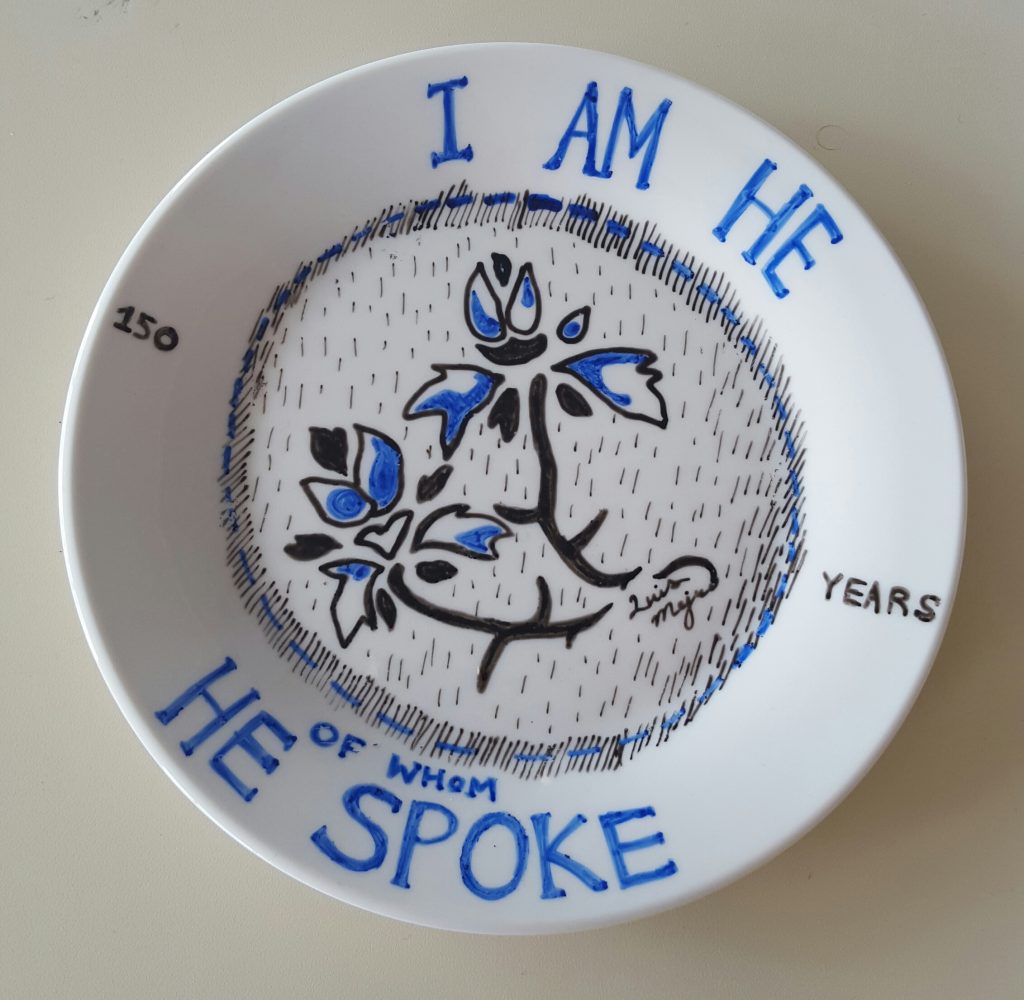 One of Haley Jung's finished plates for Edgar x Edgar in commemoration of Luis Mejico’s installation/performance for First and Live Transmission.
One of Haley Jung's finished plates for Edgar x Edgar in commemoration of Luis Mejico’s installation/performance for First and Live Transmission.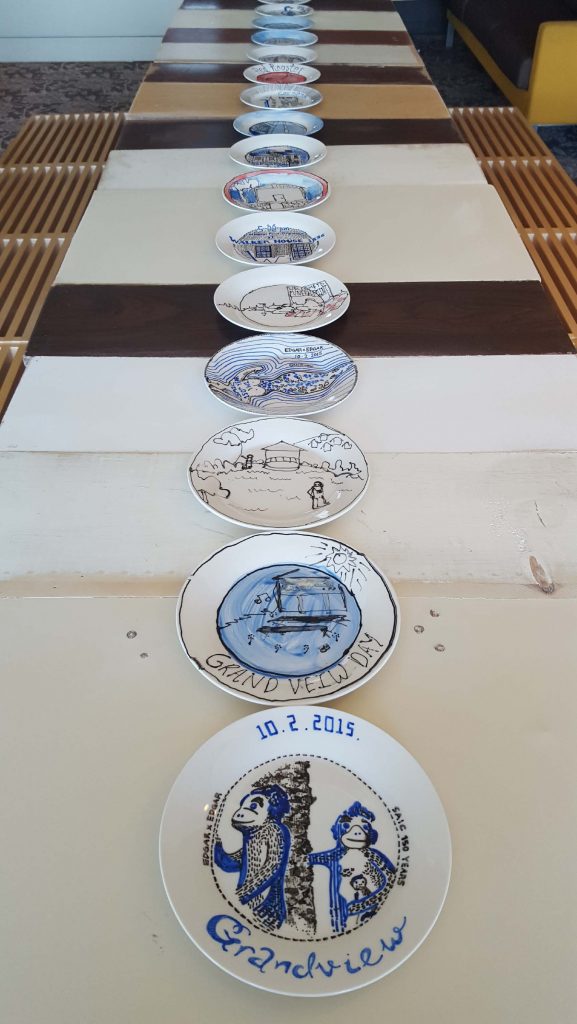 Haley Jung & Grace McKendry, Edgar X Edgar, 2016, First round of commemorative plates inspired by field trip to Mineral Point, displayed on the dinner party performance table.
Haley Jung & Grace McKendry, Edgar X Edgar, 2016, First round of commemorative plates inspired by field trip to Mineral Point, displayed on the dinner party performance table.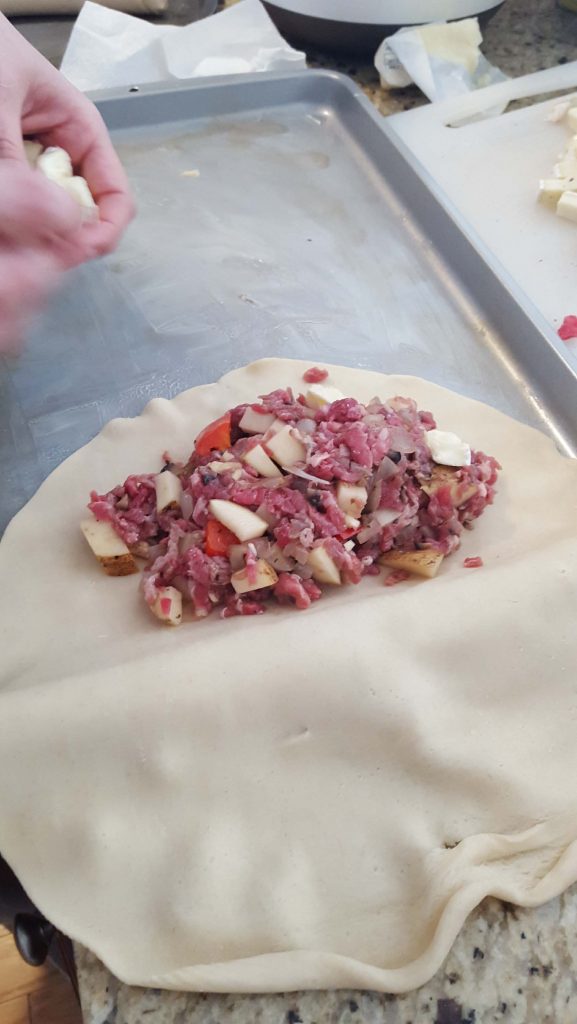 Photographic documentation of Grace making a Cornish pasty for Edgar x Edgar dinner party on April 16th.
Photographic documentation of Grace making a Cornish pasty for Edgar x Edgar dinner party on April 16th.


